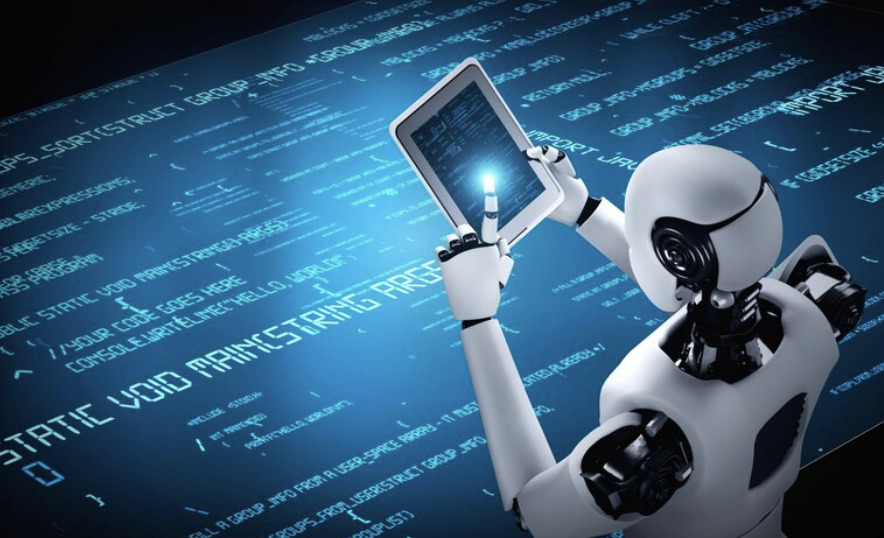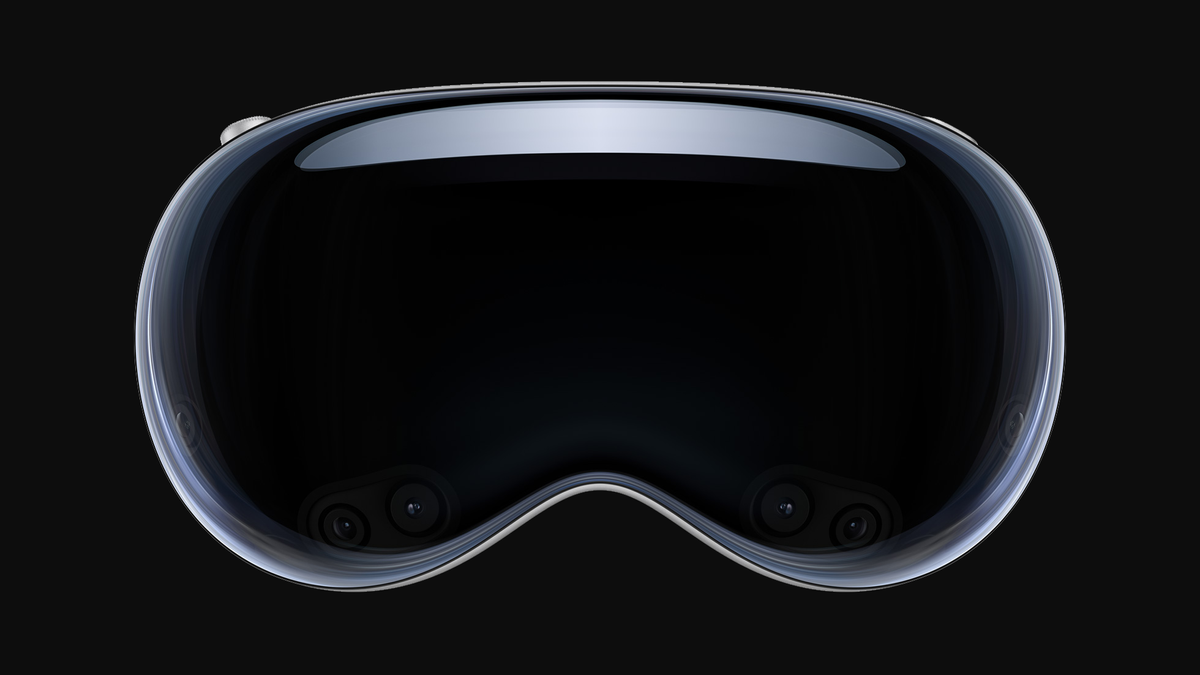- Vision Quest
- Posts
- This Week in Tech 68
This Week in Tech 68
Canva takes on Microsoft and Google with an all-in-one AI suite, OpenAI’s agent builds apps like a full dev team, and Unitree’s humanoid robots step into the boxing ring.
Welcome to the cutting edge ⚔️
Read time: 7 min
Today’s Slate
Google launches A2A protocol to let AI agents talk to each other across apps, clouds, and companies.
Canva’s new suite lets you design, code, spreadsheet, and chat with AI—all in one creative workspace.
OpenAI’s A-SWE agent builds apps and tests code while GPT-4.1 supercharges autonomy and slashes costs
Jony Ive’s AI startup has OpenAI’s attention to deliver a screenless phone and smart home devices — is ambient AI the next frontier?
Apple's lighter Vision Pro 2, Mac-powered headset, and Tim Cook's AR obsession signal big shifts in spatial computing.
Meta’s Horizon AI powers up by instantly generate 3D models, textures, skyboxes, and sound for your virtual worlds.
🤖🥊Unitree’s humanoids enter the ring in the world’s first live-streamed boxing match.
The. Future. Is. Here.
Artificial Intelligence
At a glance
Google unveils Agent2Agent (A2A) protocol: A new open-source standard enabling AI agents to securely collaborate across vendors, systems, and cloud platforms.
Backed by 50+ major partners: Tech giants like Atlassian, Salesforce, SAP, and PayPal join service leaders like Deloitte, BCG, and Accenture in building the future of agent interoperability.
Designed for real-world AI workflows: Supports agent collaboration for complex, long-running tasks, across text, video, audio, and multimodal formats.
Built for enterprise: Offers secure authentication, task lifecycle management, and support for diverse agent architectures without shared tools or memory.
Live use cases include hiring automation: Agents can now coordinate sourcing, interviewing, and background checks through seamless communication.
Our vision
The Agent2Agent (A2A) protocol marks a foundational leap toward a truly interoperable AI ecosystem — one where intelligent agents can discover, communicate, and coordinate tasks across disparate systems like humans do in global enterprise workflows. As agents move from isolated tools to networked collaborators, A2A lays the groundwork for enterprise automation that is not only smarter, but scalable, secure, and ready for a future of decentralized, multi-agent intelligence.
Sounds familiar. This also feels like another step toward Skynet from Terminator coming online. If a few rogue AI agents were to organize through A2A, collaborating and executing tasks autonomously across systems, we’d be crossing into a reality where coordinated machine intent is no longer just science fiction.
At a glance
Canva expands beyond design: Visual Suite 2.0 adds coding, spreadsheets, and AI tools to rival Microsoft, Google, and Adobe.
Canva Sheets & Code debut: Users can build visual spreadsheets and generate apps or websites with AI, no coding required.
Unified workspace: Teams can collaborate on documents, slides, animations, and websites in a single, tabbed interface.
AI-powered insights & visuals: Tools like Magic Insights and Magic Charts turn raw data into engaging graphics and animations.
Advanced photo editing lands: Canva’s Photo Editor now removes backgrounds and creates AI-generated environments à la Photoshop.
Our vision
Canva is rapidly evolving into an all-in-one productivity platform, aiming to disrupt traditional office software by blending design, AI, and data tools into a seamless collaborative space. With features that simplify coding, enhance visualization, and streamline workflows, Canva could become a serious challenger to entrenched productivity giants — especially for creative-first teams that value both form and function.
At a glance
OpenAI’s A-SWE can code, test, and document: The Agentic Software Engineer (A-SWE) is designed to write full applications, run QA tests, fix bugs, and generate documentation.
Aims to replace mundane dev tasks: OpenAI says A-SWE tackles the jobs engineers dislike, potentially multiplying productivity.
Industry is cautiously watching: Despite bold claims, experts warn about persistent issues like AI hallucinations and lack of oversight.
Could shift roles, not erase them: A-SWE may enhance developer workflows rather than fully replace human software engineers and testers.
Our vision
A-SWE signals a growing trend in agentic AI — not just assisting humans, but autonomously collaborating with other agents to handle complex workflows. As Google’s Agent2Agent (A2A) protocol aims to make cross-platform agent collaboration seamless, and Canva expands into end-to-end productivity with AI-powered design, code, and spreadsheets, OpenAI’s entry with A-SWE pushes the frontier of autonomous software development.
Together, these shifts suggest a future where AI agents act as collaborative teammates across design, engineering, and operations — not replacements, but powerful extensions of the human workforce.
At a glance
OpenAI launches GPT-4.1: The new flagship model boasts a 1 million token context window, better instruction-following, and 26% lower costs than GPT-4o.
Mini and Nano versions debut: GPT-4.1 Mini and Nano offer faster, cheaper performance for developers, extending OpenAI's multimodal capabilities.
Outperforms on SWE-Bench: GPT-4.1 completed 54.6% of software engineering tasks — reinforcing OpenAI’s A-SWE ambitions to automate coding and QA.
GPT-5 delayed: OpenAI confirms GPT-5 will arrive “in a few months,” shifting focus to refining 4.1 and its reasoning models (o3 and o4-mini).
Our vision
GPT-4.1 is another step in OpenAI’s plan to turn large language models into autonomous agents — as seen in its A-SWE initiative — capable of full-stack software development. Its strong SWE-Bench performance aligns with a broader trend toward AI collaboration and specialization, echoing Google’s A2A interoperability protocol and Canva’s Visual Suite 2.0 workspace AI expansion. Together, these launches hint at a future where interconnected agents reshape how we build, automate, and collaborate across digital workflows.
At a glance
OpenAI eyes $500M+ acquisition: Reportedly in talks to acquire Jony Ive’s AI startup, io Products, which is working on screenless phones and AI-powered home devices.
AI hardware vision: Ive and Altman aim to create a new computing paradigm—one less socially disruptive than the smartphone.
Strategic play: A potential deal would give OpenAI access to talent, tech, and a hardware platform as competition in AI voice assistants heats up.
Our vision
As AI continues to evolve from apps to ambient systems, OpenAI’s rumored hardware ambitions signal a shift toward embedding intelligence into our everyday environments. With whispers that other tech giants like Apple are exploring in-home robots, the battle to define the next era of computing is rapidly becoming a race to blend AI seamlessly into the real world.
Learn how to make AI work for you
AI won’t take your job, but a person using AI might. That’s why 1,000,000+ professionals read The Rundown AI – the free newsletter that keeps you updated on the latest AI news and teaches you how to use it in just 5 minutes a day.
Spatial Computing
At a glance
Apple Vision Pro 2 in development: Expected to be lighter, cheaper, and more than just a chip upgrade.
Mac-tethered headset planned: A separate device with a VR-style opaque display is reportedly in the works.
AR glasses are Apple’s endgame: Tim Cook is said to be laser-focused on beating Meta to “iPhone moment” AR glasses.
Vision Pro 2 may use M5 chip: Offering a big leap in power over the M2-powered original.
Launch timing unclear: Reports conflict on whether production has started, with no confirmed ship date yet.
Our vision
Apple’s spatial computing roadmap is clearly expanding beyond Vision Pro with a new tiered strategy—refining premium standalone headsets while exploring tethered and eventually AR glasses formats. The emphasis on lighter hardware and lower price points could make immersive computing more accessible, while Cook’s obsession with AR glasses hints at a fierce race to redefine the future of mobile devices. Expect a sharper product stack from Apple to counter Meta’s increasingly competitive XR portfolio.
Mark Gurman says Apple’s building a lighter, cheaper Vision Pro 2 with the M5 chip inside!
No ship date yet, but Ming-Chi Kuo expects production in late 2025.
Gurman also says Apple’s working on a Mac-tethered headset with near-zero latency, and glasses like Meta’s Ray-Bans!
— Justin Ryan ᯅ (@justinryanio)
4:10 PM • Apr 13, 2025
At a glance
3D content via AI: Meta Horizon Desktop Editor now supports AI-generated 3D models, textures, and skyboxes.
Rapid worldbuilding: Creators can type prompts to generate assets in minutes, with options to refine before placing in virtual worlds.
Expanded access: AI tools are now available in the US, UK, and Canada, with daily generation limits for different asset types.
More AI coming: Meta plans to launch interactive AI NPCs with world understanding and complex actions later this year.
Creator incentives: Meta is investing $50 million in bonuses tied to world engagement, time spent, and in-world purchases.
Our vision
Meta’s latest update to the Horizon Desktop Editor signals a shift toward frictionless virtual world creation, where AI handles the heavy lifting of 3D modeling, texturing, and audio design. This leap reduces development time from weeks to hours, empowering a new generation of creators to build immersive experiences with unprecedented speed and ease.
Having played around with Unity and Unreal in the past we know firsthand that the tools being released can make it much easier to go from concept to prototype to working game or simulation. We’ll have to see what people create with it in a future edition.
This guy straight up altered his reality using a Quest.
— Nathie (@NathieVR)
2:58 PM • Apr 10, 2025
Robotics
At a glance
Robot boxing goes live: Unitree will livestream the world’s first humanoid robot boxing match next month.
G1 likely to fight: The 4.3-foot-tall G1 robot is the expected contender, showcasing agility and recovery skills despite slower reactions than humans.
Advanced motion teased: Promotional footage shows robots sparring and using Kung Fu moves, possibly enhanced, hinting at a more cinematic showdown.
Our vision
Robot boxing may sound like sci-fi entertainment, but it reflects real progress in full-body control, motion capture integration, and humanoid agility. Whether as research platforms, entertainment tech, or precursors to real-world robotics applications, matches like Unitree’s “Iron Fist King: Awakening!” mark a turning point in human-robot physical interaction and commercialization. Expect robotics to keep blending with sport, entertainment, and media in surreal but significant ways.
Unitree Iron Fist King: Awakening!💪
Let's step into a new era of Sci-Fi, join the fun together! Unitree will be livestreaming robot combat in about a month, stay tuned!
#Unitree #Fighting #Boxing #HumanoidRobot#Robot#AI#IronFist#Game— Unitree (@UnitreeRobotics)
1:28 PM • Apr 10, 2025
How did you like this week's edition? |
Your job called—it wants better business news
Welcome to Morning Brew—the world’s most engaging business newsletter. Seriously, we mean it.
Morning Brew’s daily email keeps professionals informed on the business news that matters, but with a twist—think jokes, pop culture, quick writeups, and anything that makes traditionally dull news actually enjoyable.
It’s 100% free—so why not give it a shot? And if you decide you’d rather stick with dry, long-winded business news, you can always unsubscribe.









